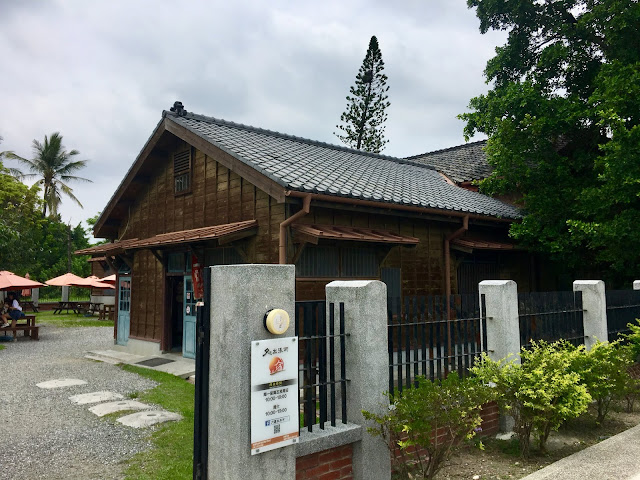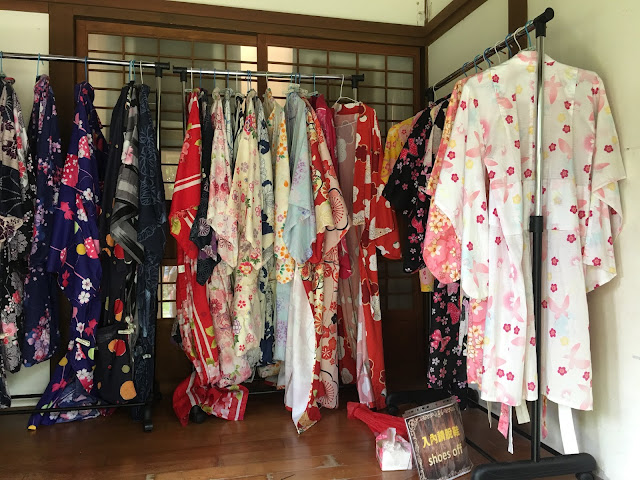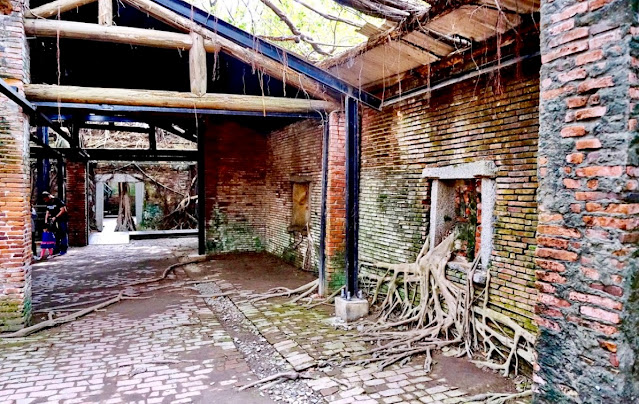It's our second time visiting Anping. Two years ago, we visited the five most popular places that can be visited with a single ticket. This time, I wanted to see some places we missed before. We visited Sio House (Salt Museum), Oyster Shell Kiln, Temple, Old Street, forts and castle and some smaller ancient buildings. Some places are free to visit, while others have an entrance fee of 50 NTD. Anping is one of my favorite places to visit, as it is full of history and street food can be found everywhere. In March 2012, Anping was named one of the Top 10 Small Tourist Towns by the Tourism Bureau of Taiwan. The older place name, Tayouan, comes from a nearby Taiwanese aboriginal tribe and was given by the Dutch and Portuguese. Han immigrants later renamed the area "Anping" after the Anping Bridge in Fujian. Soon after Qing rule was established in 1683, the name "Taiwan" (臺灣) was officially used to refer to the entire island with the establishment of Taiwan Prefecture.
Sio House Salt Museum (夕遊-出張所)
During the Japanese occupation, the Sio House Salt Museum served as an important salt affairs office responsible for storage, sales, and inspection. The museum is located near a beach and park, covering an area of 100 pings (330 m2). Inside the exhibition hall, you can find colored salt in 366 different colors, including a color associated with your own birthday. Each color has its meaning, which you can inquire about from the staff (Chinese only). Additionally, you can taste colored baked quail eggs and try breaking the shells using a wooden millet. There is also a DIY lesson on making your own douhua (Tofu pudding).


See also: Salt Fields in Beimen


History of salt production in Taiwan
When salt production began in Taiwan, it was not possible to test the salt. However, residents in coastal areas obtained salt by boiling seawater or trading with merchants from mainland China. Those who didn't live near the coast used spring water to obtain salt. In 1648, the Dutch East India Company imported crushed stone from mainland China to build a salt granule (crystallized pool). They opened a salt mine, but the salt produced there was bitter and unsellable. Until the end of Dutch rule, Taiwan relied on imported salt from mainland China, except for local residents who made their own sea salt.
In 1661, when Zheng Jun arrived in Taiwan, he actively expanded agricultural land. Additionally, in 1665, Ming Zheng joined the army and Chen Yonghua taught people to build hills, reconstructing the abandoned salt fields and improving the salt-making method. They opened three salt fields with a total of 2,744 plaques.
During the Japanese rule in Taiwan, the salt sales network was disrupted when the monopoly system was abolished in 1895. Most salt farmers switched to sun-drying fields as salt produced in Taiwan couldn't be sold smoothly. The area of salt fields was reduced from 640 to 203. In 1899, the Governor's Office of Taiwan restored the monopoly system with the "Taiwan Salt Monopoly Rules," and the salt field area in Taiwan returned to its Qing Dynasty size, capable of exporting salt to Japan. Salt production exceeded 100,000 metric tons in 1914 and reached up to 170,000 metric tons in two years.
See also: Fort Zeelandia
Taiwan Salt Co.
During World War I, the demand for industrial salt increased with the development of the Japanese industry. In 1919, the Taiwan Governor's Monopoly Bureau established "Taiwan Salt Co., Ltd." for salt production, while Dainippon Salt Co., Ltd. was responsible for salt export to Japan. The demand for industrial salt further increased in the 1930s due to the rise of the Japanese chemical industry. The Monopoly Bureau established a plan to construct 47,000 metric tons of industrial salt over four years.
In 1938, the company established the South Japan Salt Industry Co. and opened a total of 6,000 industrial salt fields in Chiayi, Tainan, and Kaohsiung. A factory was set up in Anshun, Tainan in 1942, and the output reached 530,000 metric tons. In 1947, the Taiwan Provincial Chief Executive's Office of Monopoly received all the salt assets of the Japanese in Taiwan and established the Tainan Salt Industry Company to continue the monopoly system. In 1952, six salt fields were set up, and the Taiwan salt industry entered a state-run period. Even after the war, Japan had a demand for Taiwanese salt, leading to the signing of the "Taiwan Salt Sales Day Contract" in 1950 for a total of 360,000 tons.
In 1980, low-capacity salt fields were closed, and the overall trend of salt field area and production in Taiwan was on the rise. In 1962, it surpassed the level of Japanese occupation for the first time, with a total annual output of 560,000 metric tons and large-scale exports. From 1953 to 1966, the average annual export of salt to Japan was 200,000 metric tons. However, the output at this time only met 30% of Taiwan's industrial salt demand, resulting in high salt prices. Efforts were made to reduce production costs and increase competitiveness, including cooperation with the French company Midi in the 1970s. Although some improvements were made, Taiwan's climate ultimately limited the success of the plan. In 2002, all salt fields were closed, and the Taiwan Salt Company became a private company after the withdrawal of official shares in November of the same year. The salt monopoly was also abolished.
The remains of salt companies in Anping
The Taiwan Salt Japanese-style dormitory (安平靜苑) was established in 1919. At that time, numerous factories, warehouses, offices, and dormitories were built around the salt washing factory on the bank of Yanghang Canal. You can also visit the Merchant house and Anping tree house. The Merchant house was originally constructed as a trading company and later served as an office and warehouse for the Japan Salt Company. After World War II, it became an office for the Tainan Salt Company but was eventually abandoned. In 1979, the Tainan Municipal Government transformed the building into a museum with the sponsorship of Chi Mei. The building is now overgrown with trees, and in 2004, bridges and wooden roads were built to allow visitors to explore the area.






















0 komentarze:
Post a Comment